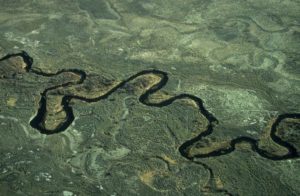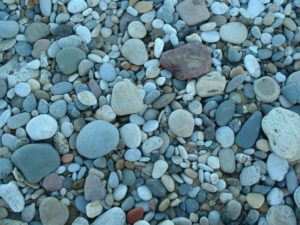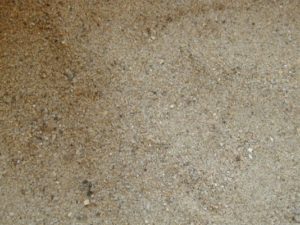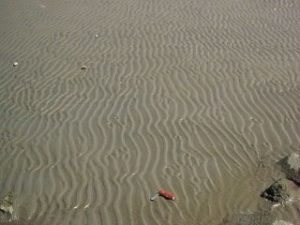11.29: Assignment- Hydrology
- Page ID
- 11569
\( \newcommand{\vecs}[1]{\overset { \scriptstyle \rightharpoonup} {\mathbf{#1}} } \)
\( \newcommand{\vecd}[1]{\overset{-\!-\!\rightharpoonup}{\vphantom{a}\smash {#1}}} \)
\( \newcommand{\dsum}{\displaystyle\sum\limits} \)
\( \newcommand{\dint}{\displaystyle\int\limits} \)
\( \newcommand{\dlim}{\displaystyle\lim\limits} \)
\( \newcommand{\id}{\mathrm{id}}\) \( \newcommand{\Span}{\mathrm{span}}\)
( \newcommand{\kernel}{\mathrm{null}\,}\) \( \newcommand{\range}{\mathrm{range}\,}\)
\( \newcommand{\RealPart}{\mathrm{Re}}\) \( \newcommand{\ImaginaryPart}{\mathrm{Im}}\)
\( \newcommand{\Argument}{\mathrm{Arg}}\) \( \newcommand{\norm}[1]{\| #1 \|}\)
\( \newcommand{\inner}[2]{\langle #1, #2 \rangle}\)
\( \newcommand{\Span}{\mathrm{span}}\)
\( \newcommand{\id}{\mathrm{id}}\)
\( \newcommand{\Span}{\mathrm{span}}\)
\( \newcommand{\kernel}{\mathrm{null}\,}\)
\( \newcommand{\range}{\mathrm{range}\,}\)
\( \newcommand{\RealPart}{\mathrm{Re}}\)
\( \newcommand{\ImaginaryPart}{\mathrm{Im}}\)
\( \newcommand{\Argument}{\mathrm{Arg}}\)
\( \newcommand{\norm}[1]{\| #1 \|}\)
\( \newcommand{\inner}[2]{\langle #1, #2 \rangle}\)
\( \newcommand{\Span}{\mathrm{span}}\) \( \newcommand{\AA}{\unicode[.8,0]{x212B}}\)
\( \newcommand{\vectorA}[1]{\vec{#1}} % arrow\)
\( \newcommand{\vectorAt}[1]{\vec{\text{#1}}} % arrow\)
\( \newcommand{\vectorB}[1]{\overset { \scriptstyle \rightharpoonup} {\mathbf{#1}} } \)
\( \newcommand{\vectorC}[1]{\textbf{#1}} \)
\( \newcommand{\vectorD}[1]{\overrightarrow{#1}} \)
\( \newcommand{\vectorDt}[1]{\overrightarrow{\text{#1}}} \)
\( \newcommand{\vectE}[1]{\overset{-\!-\!\rightharpoonup}{\vphantom{a}\smash{\mathbf {#1}}}} \)
\( \newcommand{\vecs}[1]{\overset { \scriptstyle \rightharpoonup} {\mathbf{#1}} } \)
\( \newcommand{\vecd}[1]{\overset{-\!-\!\rightharpoonup}{\vphantom{a}\smash {#1}}} \)
\(\newcommand{\avec}{\mathbf a}\) \(\newcommand{\bvec}{\mathbf b}\) \(\newcommand{\cvec}{\mathbf c}\) \(\newcommand{\dvec}{\mathbf d}\) \(\newcommand{\dtil}{\widetilde{\mathbf d}}\) \(\newcommand{\evec}{\mathbf e}\) \(\newcommand{\fvec}{\mathbf f}\) \(\newcommand{\nvec}{\mathbf n}\) \(\newcommand{\pvec}{\mathbf p}\) \(\newcommand{\qvec}{\mathbf q}\) \(\newcommand{\svec}{\mathbf s}\) \(\newcommand{\tvec}{\mathbf t}\) \(\newcommand{\uvec}{\mathbf u}\) \(\newcommand{\vvec}{\mathbf v}\) \(\newcommand{\wvec}{\mathbf w}\) \(\newcommand{\xvec}{\mathbf x}\) \(\newcommand{\yvec}{\mathbf y}\) \(\newcommand{\zvec}{\mathbf z}\) \(\newcommand{\rvec}{\mathbf r}\) \(\newcommand{\mvec}{\mathbf m}\) \(\newcommand{\zerovec}{\mathbf 0}\) \(\newcommand{\onevec}{\mathbf 1}\) \(\newcommand{\real}{\mathbb R}\) \(\newcommand{\twovec}[2]{\left[\begin{array}{r}#1 \\ #2 \end{array}\right]}\) \(\newcommand{\ctwovec}[2]{\left[\begin{array}{c}#1 \\ #2 \end{array}\right]}\) \(\newcommand{\threevec}[3]{\left[\begin{array}{r}#1 \\ #2 \\ #3 \end{array}\right]}\) \(\newcommand{\cthreevec}[3]{\left[\begin{array}{c}#1 \\ #2 \\ #3 \end{array}\right]}\) \(\newcommand{\fourvec}[4]{\left[\begin{array}{r}#1 \\ #2 \\ #3 \\ #4 \end{array}\right]}\) \(\newcommand{\cfourvec}[4]{\left[\begin{array}{c}#1 \\ #2 \\ #3 \\ #4 \end{array}\right]}\) \(\newcommand{\fivevec}[5]{\left[\begin{array}{r}#1 \\ #2 \\ #3 \\ #4 \\ #5 \\ \end{array}\right]}\) \(\newcommand{\cfivevec}[5]{\left[\begin{array}{c}#1 \\ #2 \\ #3 \\ #4 \\ #5 \\ \end{array}\right]}\) \(\newcommand{\mattwo}[4]{\left[\begin{array}{rr}#1 \amp #2 \\ #3 \amp #4 \\ \end{array}\right]}\) \(\newcommand{\laspan}[1]{\text{Span}\{#1\}}\) \(\newcommand{\bcal}{\cal B}\) \(\newcommand{\ccal}{\cal C}\) \(\newcommand{\scal}{\cal S}\) \(\newcommand{\wcal}{\cal W}\) \(\newcommand{\ecal}{\cal E}\) \(\newcommand{\coords}[2]{\left\{#1\right\}_{#2}}\) \(\newcommand{\gray}[1]{\color{gray}{#1}}\) \(\newcommand{\lgray}[1]{\color{lightgray}{#1}}\) \(\newcommand{\rank}{\operatorname{rank}}\) \(\newcommand{\row}{\text{Row}}\) \(\newcommand{\col}{\text{Col}}\) \(\renewcommand{\row}{\text{Row}}\) \(\newcommand{\nul}{\text{Nul}}\) \(\newcommand{\var}{\text{Var}}\) \(\newcommand{\corr}{\text{corr}}\) \(\newcommand{\len}[1]{\left|#1\right|}\) \(\newcommand{\bbar}{\overline{\bvec}}\) \(\newcommand{\bhat}{\widehat{\bvec}}\) \(\newcommand{\bperp}{\bvec^\perp}\) \(\newcommand{\xhat}{\widehat{\xvec}}\) \(\newcommand{\vhat}{\widehat{\vvec}}\) \(\newcommand{\uhat}{\widehat{\uvec}}\) \(\newcommand{\what}{\widehat{\wvec}}\) \(\newcommand{\Sighat}{\widehat{\Sigma}}\) \(\newcommand{\lt}{<}\) \(\newcommand{\gt}{>}\) \(\newcommand{\amp}{&}\) \(\definecolor{fillinmathshade}{gray}{0.9}\)This assessment consists of two parts: a virtual lab with lab report and a list of questions on groundwater and related features.
In the Virtual Lab, you will investigate how different types of soil hold water and which ones would make the best aquifer. You will collect data and use it to make observations about the relationship of soil porosity to soil permeability.
The list of questions follows the lab activity.
Basic Requirements (assignment criteria):
Visit the following website
- To select a type of soil, change the percentages of sand, silt, and clay by sliding the bars on the Soil Meter.
- Click the Test This Soil button to move 100 mL of the soil mixture to the funnel.
- Click the Pour Water button to begin pouring water on the soil. The water will automatically stop when the first drop of water begins to form at the bottom of the funnel.
- Observe the readout that displays how much water was poured. This is the volume of water the soil held.
- To find the porosity of the soil, divide the volume of water the soil held by the total volume of the soil. Multiply the decimal by 100 and type this percentage in the Table. In the formula below, V w stands for the volume of water and V s stands for the volume of soil. V w V s x 100 = % Porosity
- Click Reset and repeat steps 1 through 5 for at least 10 of the 13 soil types.
- Please enter your values in a table (you can use the one provided on the website by clicking on the icon at the bottom).
- Save this table for your lab report (you can print it by clicking on the print button or take a screen shot or create your own table in word or excel).
For the lab report, use the data and procedures you have completed so far. Make sure you include ALL components that are necessary. The graph can simple be a bar graph showing the type of soil and its porosity.
The following are components must be included:
- Cover page with name, date & lab title
- Introduction
- Data Section
- Calculations and Interpretations
- Discussion—make sure you include a discussion on the role of the water cycle (including processes), how permeability and porosity are affected by soil types and the role of different aquifers (are there specific types of aquifers that are more suited to pumping for example)?
- Conclusion
- Reference page should include all resources cited.
In addition to the above virtual lab, please complete the following questions on groundwater and groundwater related features.
- If channel shape and water volumes are the same, which river below would have the greater transport velocity?


A B
2. If you looked at the bottom of stream A, you would see:


A B


C D
3. Which of the above would you see at the bottom of River B?
4. The greater the velocity the greater the energy. The greater the energy, the ______ the particle size that can be carried.
a) smaller b) larger c) will be the same d) can’t tell this way
5. Shale is mostly made of clay. In which depositional environment would you expect it to form:
a) mountain streams b) braided rivers c) lake bottoms d) fast moving rivers
6. With time, sediment transport by a fluvial system:
a) becomes rounded b) becomes smaller c) becomes rounded and smaller d) becomes angular e) none of the above


A B
7. In which of the above pictures of rock, has the sediment been carried the shortest distance?
8. Groundwater often produces some pretty spectacular features. Please provide a brief description for each of the following: geyser, sinkhole, karst topography, springs and disappearing streams.
Tips and hints can be found here.
The virtual assessment is adapted from “Virtual Lab” by M. Poarch, originally found here.
The question assessment is adapted from “Sediment Transport” by Austin Boyd, originally found here.
Contributors and Attributions
- Hydrology Assessment. Authored by: Kimberly Schulte. Provided by: SBCTC. Located at: http://www.columbiabasin.edu. License: CC BY: Attribution


